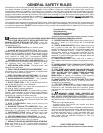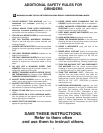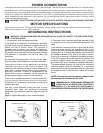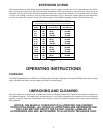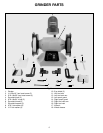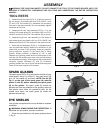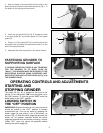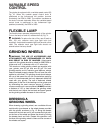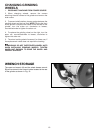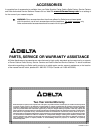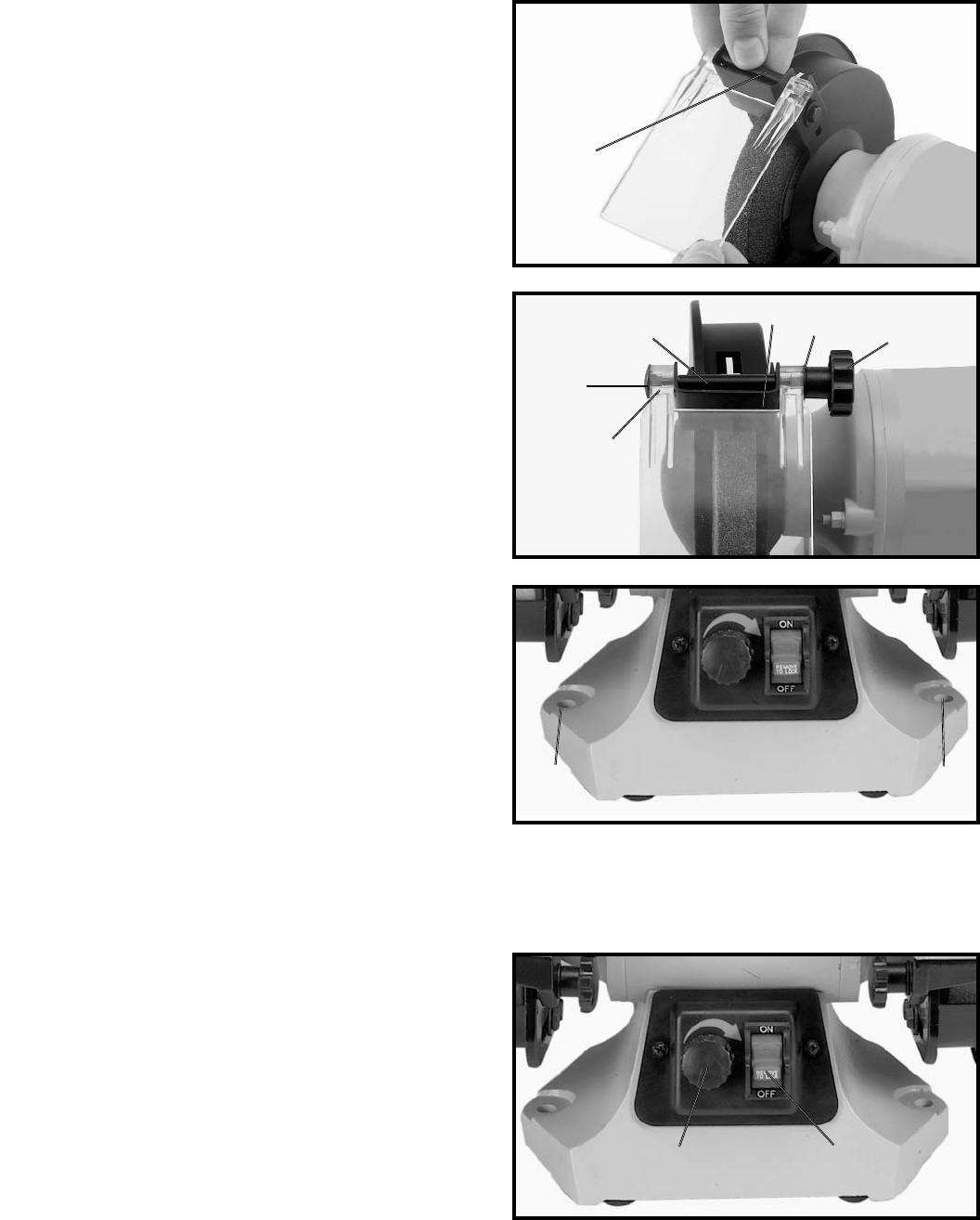
8
2. Align the holes in the eye shield with the holes in the
spark guard and place the eye shield spacer (A) Fig. 7, in
the space in the spark guard as shown.
3. Insert the eye shield bolt (A) Fig. 8, through the hole
in the eye shield (B), eye shield spacer (C), and spark
guard (D).
4. Place a 1/4" flat washer (E) Fig. 8, onto the end of the
eye shield bolt and fasten the eye shield knob (F) to the
end of the eye shield bolt.
5. Assemble the other eye shield in the same manner.
FASTENING GRINDER TO
SUPPORTING SURFACE
IF DURING OPERATION THERE IS ANY TENDENCY
FOR THE GRINDER TO TIP OVER, SLIDE OR
“WALK,” THE GRINDER MUST BE SECURED TO THE
SUPPORTING SURFACE USING FASTENERS (NOT
SUPPLIED) THROUGH THE TWO HOLES (A) Fig. 9, IN
THE GRINDER BASE.
Fig. 9
Fig. 7
A
Fig. 8
A
B
C
D
E
F
A
A
OPERATING CONTROLS AND ADJUSTMENTS
STARTING AND
STOPPING GRINDER
The switch (A) Fig. 10, is located on the front of the
grinder. To turn the grinder “ON” move the switch up to
the “ON” position. To turn the grinder “OFF” move the
switch down to the “OFF” position.
Fig. 10
A
B
LOCKING SWITCH IN
THE “OFF” POSITION
IMPORTANT: When the machine is not in use, the switch
should be locked in the “OFF” position to prevent
unauthorized use. This can be done by grasping the
switch toggle (A) and pulling it out of the switch, as
shown in Fig. 10. With the switch toggle (A) removed, the
switch will not operate. However, should the switch
toggle be removed while the sander is running, it can be
turned “OFF” once, but cannot be restarted without
inserting the switch toggle (A).




